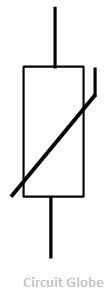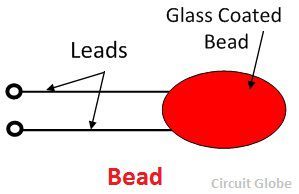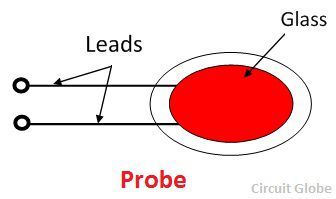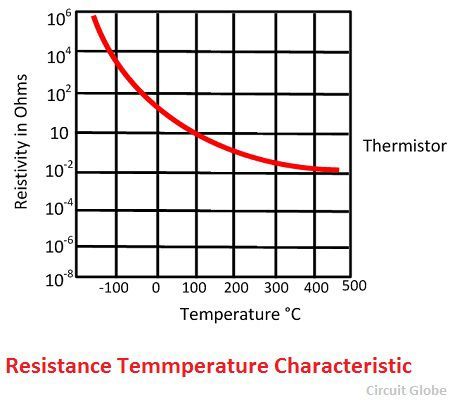Definition: The thermistor is a kind of resistor whose resistivity depends on surrounding temperature. It is a temperature sensitive device. The word thermistor is derived from the word, thermally sensitive resistor. The thermistor is made of the semiconductor material that means their resistance lies between the conductor and the insulator.
The variation in the thermistor resistance shows that either conduction or power dissipation occurs in the thermistor. The circuit diagram of thermistor uses the rectangular block which has a diagonal line on it.
Types of Thermistor
The thermistor is classified into types. They are the negative temperature coefficient and the positive temperature coefficient thermistor.
- Negative Temperature Coefficient Thermistor – In this type of thermistor the temperature increases with the decrease of the resistance. The resistance of the negative temperature coefficient thermistor is very large due to which it detects the small variation in temperature.
- Positive Temperature Coefficient Thermistor – The resistance of the thermistor increases with the increases in temperature.
Construction of Thermistor
The thermistor is made with the sintered mixture of metallic oxides like manganese, cobalt, nickel, cobalt, copper, iron, uranium, etc. It is available in the form of the bead, rod and disc. The different types of the thermistor are shown in the figure below.
The bead form of the thermistor is smallest in shape, and it is enclosed inside the solid glass rod to form probes.
The disc shape is made by pressing material under high pressure with diameter range from 2.5 mm to 25mm.
Resistance Temperature Characteristic of Thermistor
The relation between the absolute temperature and the resistance of the thermistor is mathematically expressed by the equation shown below.
Where RT1 – Resistance of the thermistor at absolute temperature T1 in Kelvin.
RT2 – Resistance of the thermistor at absolute temperature T2 in Kelvin.
Β – a temperature depending on the material of thermistor.
The resistance temperature coefficient of the thermistor is shown in the figure below. The graph below shows that the thermistor has a negative temperature coefficient, i.e., the temperature is inversely proportional to the resistance. The resistance of the thermistor changes from 105 to 10-2 at the temperature between -100C to 400C.
Advantages of Thermistor
The following are the advantages of the thermistor.
- The thermistor is compact, long durable and less expensive.
- The properly aged thermistor has good stability.
- The response time of the thermistor changes from seconds to minutes. Their response time depends on the detecting mass and the thermal capacity of the thermistor.
- The upper thermistor limit of the temperature depends on the physical variation of the material, and the lower temperature depends on the resistance reaching a large value.
- The self-heating of the thermistor is avoided by minimising the current passes through it.
- The thermistor is installed at the distance of the measuring circuit. Thus the reading is free from the error caused by the resistance of the lead.
The thermistor has more advantages as compared to the conventional thermocouple and resistance thermometer. Along with the temperature sensing the thermistor are also used in various other application.





